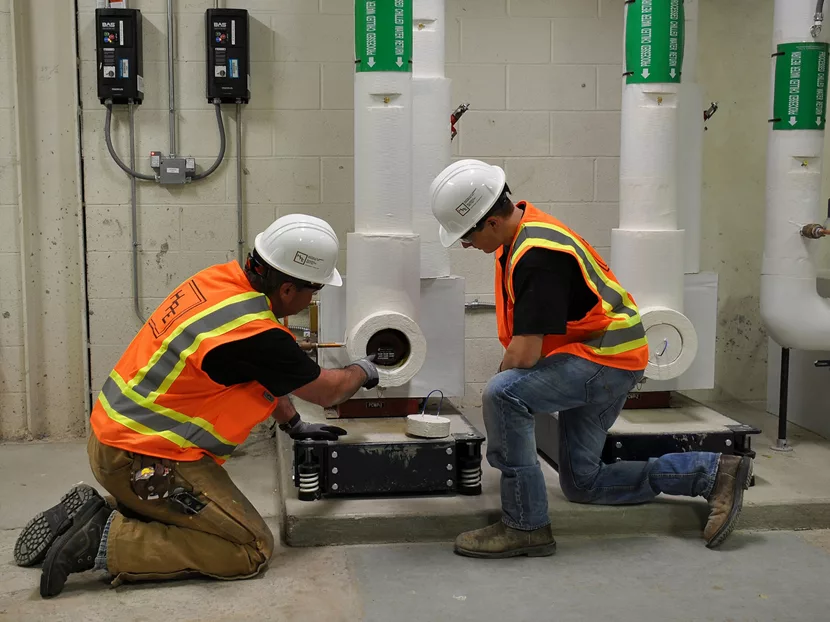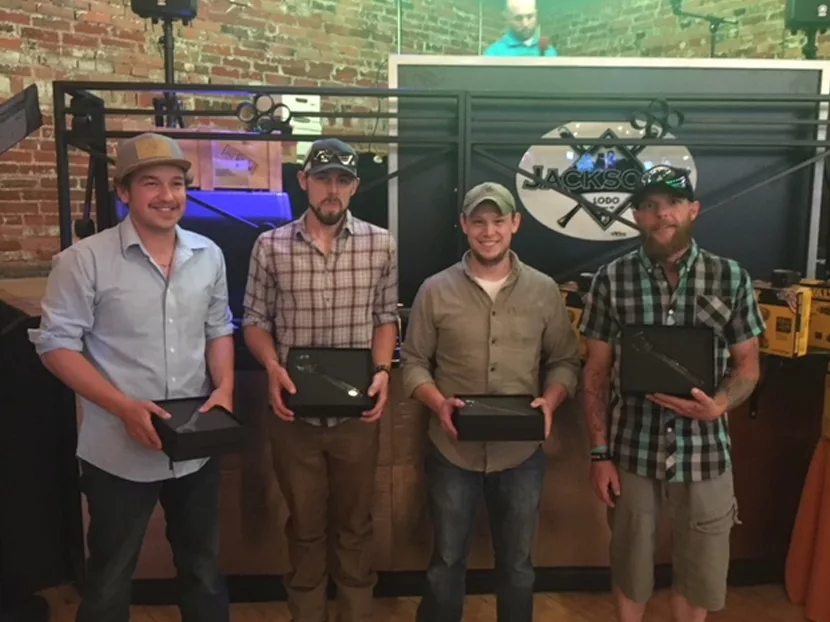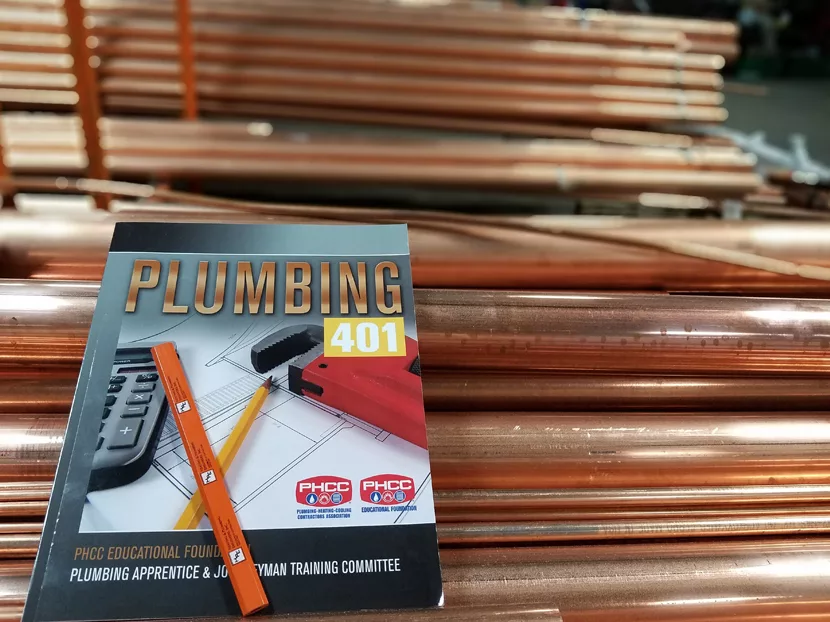The future of the trades could very well be Lynda Hannum, a senior at Calhan High School in Calhan, Colorado.
“I was so excited to be here,” she told a local newspaper as she joined 50 other students from three high schools at the Colorado Springs, Colorado home office of Heating & Plumbing Engineers Inc. “I was the only girl out of my entire class who decided to come.”
The event at HPE took place during National Apprenticeship Week last November. Sponsored by the Rocky Mountain Chapter of Associated Builders and Contractors, students learned about the advantages of apprenticeship programs and heard a panel discussion featuring young professionals talking about careers.
“Most girls are, like, welding and plumbing are for dudes, it’s not something I want to do in life,” she said. “It’s something that’s fun to know. Being here made me second-guess my future — I’m going to start looking into colleges for welding.”
Crews from HPE along with representatives from an electrical contractor and a general construction contractor showed the students what a career in the building trades might look like. The students tried their hands at six stations that included cutting and welding and other common tasks they’d do at a jobsite.
“At HPE, we have been a part of the community for more than 70 years and want to see it grow and thrive,” Kelly Eustance, HPE’s president told the assembly, which was covered by not only The Colorado Springs Gazette, but also two TV stations. “Through National Apprenticeship Week, we can expose high school students to the wonderful opportunities available to them and help our industry by developing a skilled work force,” Eustance added.
Eustance, unfortunately like so many other mechanical contractors, definitely needs the exposure. Any PHCPpro knows how tough it is to find talent to take the place of a current aging workforce as well as add to the overall numbers with new tradespeople.
The Southern Colorado Construction Career Day Foundation, predicts that the construction industry needs 250,000 new workers per year to meet future growth projection since the average age of workers in the skilled trades, nationwide, is 48-50.
By 2023, the foundation says Colorado is also expected to add 60,000 new construction jobs. With Colorado being one of the top states is the U.S. for construction, that also means there is a huge need for brand-new skilled trade workers.
In-house program
As for HPE, the mechanical contractor has been doing something about the labor shortage for the past decade when it started its own in-house apprentice training program recognized and certified by the Department of Labor and other designated state agencies.
“Our students can start whenever they are ready,” J.P. Kennel, director of production and apprenticeships at HPE, explains. “We have 18-year-olds coming out of high school. Others may have tried another job and are looking for something with more of a future to it. And still others who take part in our program are making a transition out of military service.”
The plumbing program entails four years that include 8,000 hours of on-the-job training along with 776 hours of classroom training.
During that time, the students are paid employees of HPE, working a 40-hour week, and are in line for merit-based wage increases along the way. In addition, the students are also earning credits for an associate’s degree through Emily Griffith Technical College, a Denver institution that’s been dedicated to vocational programs since opening in 1916. Kennel also says HPE is working out details with a state university to help students potentially earn credit toward a bachelor’s degree in construction management, too.
And all of this valuable education and training is free to the students.
The HPE way
HPE, founded in 1947 with current employment of 330 people, holds classes at its Colorado Springs headquarters and also at its Denver offices with teleconferencing between the two to help the instructors.
“The company started the training after noticing it was harder and harder to hire skilled tradespeople,” Kennel adds. “But it’s also become more than that. HPE was using outside sources to train students. Those are great options, but there are a couple of challenges to using another school to train: First, the students have to get there, and that’s not always easy depending upon everyone’s locations. And secondly, the students are learning generalities of the plumbing trades. But that’s not necessarily what HPE likes to do. So the big advantage for us with running our own apprentice training, is that we can train them how we like to get things done. That ultimately makes them better employees for us.”
The program, generally speaking, follows a college semester schedule track.
“A first-year student will start off learning the basics of plumbing, the history of plumbing, why we have plumbing,” Kennel explains. “We’ll also go into general safety – that’s an important part of training, and it is one of the main topics discussed at the beginning of every year. Also, we begin going into tools and, afterward, all the different types of PVF. Finally, we’ll wrap up the first year talking about some common plumbing fixtures. It’s designed to give everyone that 100,000-foot view to give them some familiarity with a lot.”
By the third year, students are taking a deep dive into submittals and blueprints.
“We want apprentices to start thinking, ‘OK, here are the architectural drawings and submittals of materials. How are we going to lay out the system and install everything to those dimensions accurately.”
In the fourth year, students concentrate on more detailed systems, learn about solar and geothermal and spend one whole semester on nothing but plumbing code.
Kennel admits there’s bound to be attrition after the first year.
“Last year we finished with 42 students,” he adds. “Some students will learn that this really isn’t for them. On the other hand, if someone goes through the second year, they’re likely to be a long-term employee.”
Kennel took over the training in 2017 after working for another mechanical contractor for 16 years. However, his father, Jim, set up the program at HPE and although “somewhat” retired still leads the second-year students.
“My dad’s always been the guy that people would go to when they had a question about code or about a particular fitting," Kennel says. "He's always been that guy who liked to share his knowledge.”
Construction tech
Kennel has also added more construction tech to the training, including CAD.
“We push prefabrication a lot at HPE,” Kennel adds “and we need everyone to understand that philosophy.”
As a result, Kennel has added 2,000 hours of optional training in CAD over and above the 8,000 hours of the traditional program.
“I have a passion for that as well because it is a part of my job at HPE,” he explains. “The CAD education gives the apprentices a better understanding of the ‘why,’ which I think is a very important approach that we take to the whole training program. The hands-on stuff is essential and it is how most of our students naturally learn skills. But we always emphasize the ‘why’ of the system. We can teach students, for example, how to put hangars up and where they need to be. But not everything is always going to be easily evident at the jobsite. And if something isn’t working right, you won’t know where to go if you don’t know the ‘why.’







